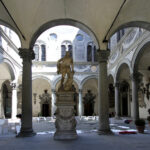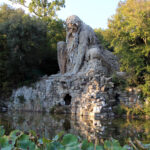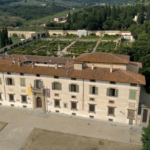A camper tour of the Medici Villas, UNESCO Heritage Sites
Slow Tour in Tuscany through the Medici Villas
Unveiling the Renaissance Legacy of Tuscany’s Magnificent Medici Residences, UNESCO World Heritage Sites
Video List
- Florence Slow Tour: The Medici Villa di Castello
- Florence Slow Tour: Palazzo Medici Riccardi
- The Medici Villa La Petraia
- Florence Slow Tour: The Medici Park of Pratolino
- Florence Slow Tour: The Medici Renaissance
- The Medici Villa of Poggio a Caiano
- The Medici Villa of Cerreto Guidi
- Florence: Boboli Gardens and Villa La Loggia
- The Medici Villa of Poggio Imperiale
- Medici Villa in Seravezza
The magnificent Medici Villas, commissioned and curated by the Medici family, represent the epitome of beauty and Renaissance culture in Tuscany. These residences were conceived as places of pleasure and delight for the illustrious members of the family throughout different periods of their long and influential history in Florence and Tuscany.
The story of the Medici Villas is fascinating, beginning with Cosimo the Elder, who inaugurated Villa Careggi, the birthplace of the Neoplatonic Academy and the Renaissance. Giovanni and Lorenzo di Pierfrancesco commissioned Botticelli to create the famous works “The Birth of Venus” and “Primavera” for Villa Castello, where Cosimo I also had the first Italian-style garden designed by Tribolo. Later, Francesco I created an extraordinary alchemical garden at Pratolino, while Ferdinando expanded Villa La Petraia, where the music played at his wedding marked a new era in musical conception, thanks to the Camerata de’ Bardi.
The women of the Medici family also left a significant mark, often intertwined with intrigue and dramatic stories. Isabella de’ Medici died under mysterious circumstances at Cerreto Guidi, possibly murdered by her husband. At Poggio a Caiano, Bianca Cappello died suspiciously alongside her husband, Francesco I, likely poisoned by his brother, Ferdinando. The Boboli Gardens were commissioned by Eleonora di Toledo, wife of Cosimo I, while Cristina di Lorena ruled from Palazzo Seravezza, the most distant from Florence, overseeing the rich resources of Versilia, including iron, silver, and marble. At Villa Poggio Imperiale, we finally discover the figure of the Electress Palatine, the last descendant of the Medici, who, with great foresight, donated the entire Medici heritage to the Italian state, becoming a pioneer of cultural tourism.
Each villa tells a unique story, reflecting the personality of those who lived there. Unlike the medieval fortresses built for defense, these residences were transformed by the Medici into places dedicated to pleasure and beauty, surrounded by gardens that evoked paradise on earth. Besides being self-sufficient, with citrus orchards and vegetable gardens, they housed water features, fish ponds, and allegorical decorations symbolizing the harmony between man and nature. At Villa Castello, for example, the animal grotto represents a surprising attempt to recreate the wilderness within a strict geometric order. The magnificent interior decorations, such as the frescoes celebrating the Medici’s exploits at Villa La Petraia, or the alchemical scenes and automata at Pratolino, reflect the artistic and cultural evolution of an extraordinary era.
It’s no wonder this was the period of the Italian Renaissance, an era of patron lords and Popes, of artistic splendor and great conflicts, still echoing today in the beloved villas of the Medici family.
















2 Comments
The Medici Villas, a UNESCO web site in Tuscany | My Blog
[…] Supply hyperlink […]
The Medici Villas, a UNESCO site in Tuscany | My Blog
[…] Source link […]